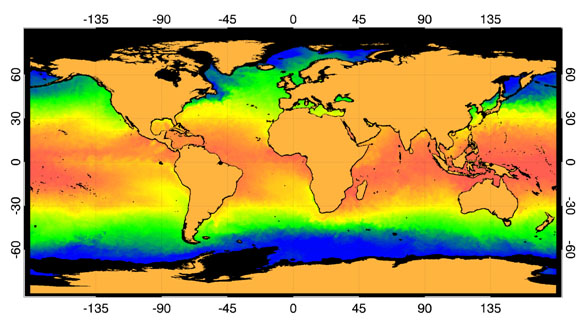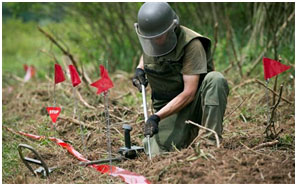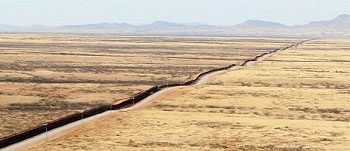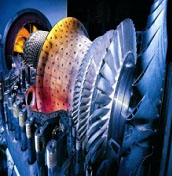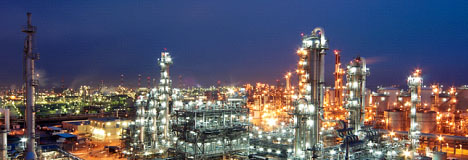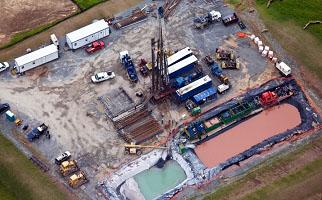Opportunities and Challenges in Emerging Applications for Millimetre, Microwave & Terahertz Remote Sensing
Microwave Optimally Interpolated Sea Surface Temperature Map
Millimetre, microwave and terahertz (MMT) (300MHz to 3 THz) remote sensing is widely used in Earth observation for measuring the temperature, and molecular absorption or emissivity of an object, environment or a scene. Major Earth observation applications in this realm include remote sensing of the atmosphere, water vapour and humidity measurement from space and ground, profiling of Earth’s atmosphere for various molecules and radicals (ozone, chlorine monoxide, sulphur dioxide, etc.), measuring ocean surface temperature (see image above) and severe weather and meteorological measurements.
These characteristics and the ability to detect hidden objects also make MMT remote sensing very interesting to the security sector. International terrorism has reached a level where adequate countermeasures to protect the population have become an imperative. Similarly, the improved surveillance and protection of sensitive infrastructures, such as nuclear power plants, airports, or mass events is now a high priority.
Dealing with the humanitarian consequences of conflict has also become an imperative, with contamination by landmines being increasingly recognized as an inhumane burden on countries (often very poor) ravaged by war. Conventional techniques, like metal detectors or trained dogs are too inefficient to solve this problem, and the increasing use of plastic materials to avoid detection is increasing the challenge. MMT remote sensing is increasingly being explored as a potential solution to this challenge.
In the defence sector, these sensors are already widely used for weapon guidance and missile seekers. Now, interest is being shown from a wide range of other markets which have similar remote sensing needs. Plasma diagnostics and imaging, remote measurement of temperature and gas composition in gas turbines, determination of soil moisture as part of precision agriculture vie alongside newly emerging applications in the environment, medical, defence and security sectors.
A recent workshop held by the Centre for Earth Observation Instrumentation & Space Technology (CEOI-ST) brought together technical experts from several of these sectors to discuss the emerging applications and explore the technical challenges that need to be overcome if MMT remote sensing is to find widespread adoption.
The discussions identified a wide range of application interests in this part of the EM spectrum, including communications and radar, altimetry, radiometry, gas detection, damage inspection, monitoring in hostile environments, materials assessment, detection of explosives / drugs / people, and monitoring of industrial processes.
In the Security sector, several challenge areas were highlighted where MMT sensing may have applications. Explosives, weapons and drug detection now need extending to the logistics sector, especially for fast parcel screening and interrogation. X-rays are no longer used for screening people, so any improvements in the speed, accuracy, and false positives / negatives of alternative screening technologies is useful. And while remote sensing at a distance for explosives and drugs is highly desirable, atmospheric absorption can be an issue, especially in THz region. Multispectral sensing would also be of value in providing more accurate analysis and reducing false positives / negatives.
A key challenge in the defence sector is multiple target identification. Stand-off THz detection using lasers has been considered, but signal absorption is too high and lines are pressure broadened in this region, resulting in confused target identification. Another approach is remote sensing of gases (e.g. exhausts) to determine number and types of targets. Millimetre waves can be used for temperature sensing, so it could be used for target detection e.g. missiles or exhausts on vehicles. There is an interest in THz imaging from LEO satellites for missile detection using small changes in temperature rather than species. There is also an interest in flying such detection systems on UAVs, which will provide challenges of miniaturisation, power, data management, and download speeds. Through-wall imaging has been a major interest for many years, as has been the exploitation of space and of space technologies in Defence.
A number of potential applications in the gas turbine sector were identified. Gas analysis of exhaust plumes, spatial distribution of chemical species, and chemical species monitoring in engine test beds were one set of applications discussed. There are lots of chemical species and radicals that cannot be detected and it was postulated that THz analysis may be able to help. Other applications discussed included remote sensing of internal parts and processes of an engine where it is difficult to deploy in-situ sensors; high bandwidth communications to transmit operational data from sensors in the engine during flight for continuous monitoring applications, and assessment of new materials such as composites. One such composite is carbon fibre but this is too conductive for effective transmission of this type of radiation. While MMT sensing appears to be interesting, it is not yet clear whether it will be sufficiently disruptive to be of value in many of these applications.There are a wide range of applications for MMT in the process sector but existing well-developed ready-made instruments do not exist currently. The individual applications can vary widely and applications development is needed for each. In process inspection, monitoring of variations in average composition is often all that is needed. The objective is
to monitor instabilities in the process rather than precise chemical composition. This application needs small, low power, low cost detectors. THz has a number of advantages in analysing and monitoring polycrystalline materials which can be particularly useful in sectors such as the semiconductor industry. The potential for this part of the EM spectrum to catalyse / accelerate chemical reactions was also discussed. Microwave reactors exist, but THz might be applicable to specific chemical structures. This needs high levels of radiation power with a broad bandwidth. The technique may work in gas phase as well as solids and be more tractable for specific gases. THz imaging of chemical reactions may also be possible, but applications have not yet been identified and the technology, while having potential, does not yet seem matched to the need.The medical market is very diverse but there are a number of underpinning drivers, including cost reduction and sensing in the home. However, it is difficult to get new technologies adopted against low cost incumbent ones. Many imaging technologies have been reviewed and it is difficult to see where THz imaging, for example, brings any disruptive benefits. Alternative technologies and sensor fusion often provide cost effective solutions.
In the environmental sector, there are several applications where remote monitoring using MMT may provide significant advantages. Hydrocarbon leaks over large industrial facilities, leaks from refrigerators in warehouses and retail facilities, monitoring of fracking sites and waste dumps are a few examples.
However, there are some major challenges here. Stand-off detection is still difficult, different gases need different techniques, detection needs to be passive rather than active, and avoiding the need to cool the sensors is preferable because of the cost. An example of the type of sensors deployed is in car parks where pollution detectors cost a few hundred pounds. This application area is still looking for a viable solution.Systems integrators are looking for new technologies to solve sensing and communications problems in a range of markets, from automotive to precision agriculture. However, there is very high pressure on cost reduction, so any applications of MMT technologies must take this into account.
While many potential application opportunities have been identified, a range of technical challenges need to be solved if they are to be realised. These were summarised as:
Sensing – stand-off gas detection, exploitation of “signals of opportunity” for sensing, monitoring the location of terrestrial emissions using LEO satellites, and analytics on back end of the sensing chain to aid users and enable autonomous decision making were key areas identified for further research.
Miniaturisation – reducing size, weight, and power consumption are all key challenges. The highest priorities are reduction in antenna size, cheap compact efficient thermoelectric cooling technologies, and ambient temperature sensors.
Cost – reducing power consumption, increasing operational efficiency and electronically steered multi-element antennas were all identified as major opportunities to lower costs.
Communications – data transfer from hostile environments was seen as a major challenge, and terahertz communications may provide potential solutions for higher bandwidths and data transfer rates.
The discussion concluded that to support commercial deployment into terrestrial markets of microwave, millimetre wave and terahertz technologies developed for Earth observation instruments, and to enable the use of the data from them in products and services, a wider UK strategy, supported by other research and innovation agencies such as EPSRC, STFC, and Innovate UK is needed.
In addition, addressing the challenges of increased performance and miniaturisation in Earth observation instrumentation will require improvements in a wide range of enabling technologies. The CEOI-ST programme is always seeking high quality proposals for projects that are aligned with these objectives.
Further information about this and previous Industry Consultation Workshops can be found at www.ceoi.ac.uk. The website also includes information on the wide range of projects and programmes funded by the CEOI-ST. You can also contact the CEOI-ST Director, Professor Mick Johnson: Tel: +44 (0)1438 774421 or email: mick.johnson@airbus.com

